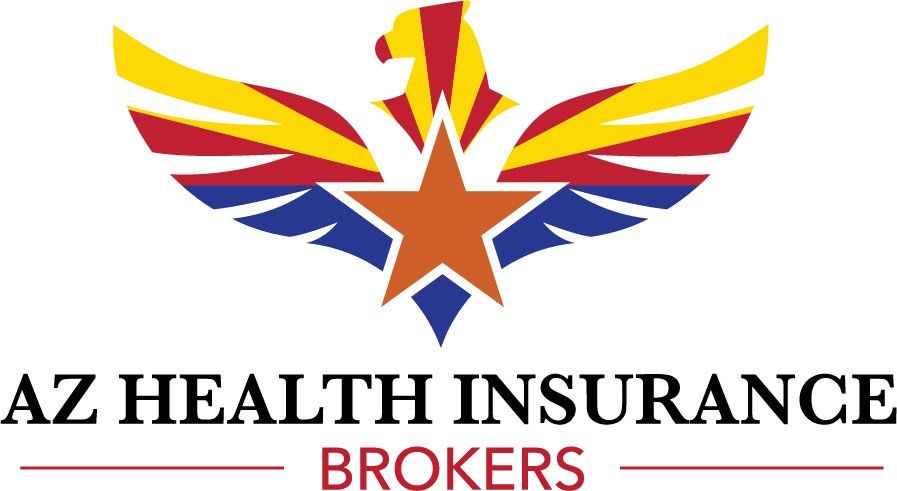Tips for Medicare Enrollment in Arizona
When you turn 65 years old in the U.S., you’ll usually become eligible for Medicare, the federal government’s health insurance program for seniors. Some individuals who are younger than age 65 may also qualify for Medicare, such as those who receive Disability benefits and those who have permanent kidney failure.
In this guide, learn more about
what Medicare is and the steps to consider if you qualify.
Key Takeaways
- Medicare is the federal government’s health insurance plan. Those who are ages 65 and older, as well as those who qualify due to a specific disability or who have end-stage renal disease, may sign up for Medicare.
- There are several factors to consider when signing up for Medicare, including getting Part B coverage, deciding which type of Medicare plan makes the most sense for you, and getting a plan that covers your providers, hospitals and prescriptions.
- A local health insurance broker can help you navigate the transition to Medicare. If you need help, contact one for a free consultation and to learn about all your options.

1. Activate Medicare Part B
Individuals are automatically enrolled in Medicare Part A coverage when they apply for retirement or disability benefits. If they have worked 40 quarters in their lifetime. Medicare Part A is hospital insurance and provides healthcare coverage for inpatient care from:
- In-Patient Hospitalization
- Hospice
- Skilled nursing facilities
It also covers some outpatient home health care. Medicare Part A is free if you (or your spouse) were employed and paid Medicare taxes for at least 10 years.
In order to get health insurance for coverage for doctor services, outpatient care and things like medical equipment, you must sign up for Medicare Part B. Medicare Part B is medical insurance.
If you’re coming off of employer healthcare coverage past the age of 65, make sure your employer completes the CMS-L564: Request for Employment Information form before you apply for Medicare Part B. This ensures you can continue medical insurance seamlessly after you leave your job, even outside of regular annual Medicare enrollment, during a special enrollment period. And avoids the Late Enrollment Penalty.
If you plan to delay drawing on your Social Security benefits, make sure you sign up for Medicare Part B during your Initial Enrollment Period or during a credible Special Enrollment period. To avoid not having coverage when you need it.
2. Confirm Medicare Part B & D Premium Costs
The Medicare system does a two year look back to determine pricing for the Part B premium, as well as the prescription drug coverage premium (Medicare Part D). If your income is over a certain threshold, there will be an adjustment, known as the Income-Related Monthly Adjustment Amount (IRMAA), that affects your premium costs.
You can check on the Social Security Administration website to see what your premiums would be, based on your past household income.
3. Decide What Type of Medicare Plan You’re Interested In
There are several different types of Medicare plans you can choose from. They include:
- Original Medicare: With an Original Medicare plan, you can go to any doctor or hospital in the U.S. that takes Medicare. You usually don’t need a referral to see a specialist. You’ll typically pay a 20% coinsurance rate of the Medicare-approved amount after you meet your deductible. Most people will pay a monthly premium for Part B. There’s no yearly limit on what you pay out-of-pocket. With Original Medicare, you can purchase a Medigap policy.
- Medigap: A Medigap policy is a supplement to Original Medicare coverage and can only be purchased when someone has both Part A and Part B of Original Medicare. It only covers one person and must be purchased through a private insurance carrier. Medigap policies are designed to you for out-of-pocket medical costs, including copayments, coinsurance and deductibles. Medigap policies don’t reimburse the member, they pay for the coverages, just like an MAPD or an employer plan.
- Medicare Advantage: A Medicare Advantage Plan is called Part C and enables members to receive Original Medicare coverage from private health plans, such as preferred provider organizations (PPOs) and health maintenance organizations (HMOs). Unlike Original Medicare, Medicare Advantage Plans may cover value added services such as vision, hearing, and dental insurance. You can only use providers who are in the plan’s network and service area, and in some cases, you may need a referral to see a specialist. Medicare Advantage plans have a yearly limit on what you pay out of pocket for services Original Medicare covers. With a Medicare Advantage Plan, you’ll pay the monthly Part B premium, as well as potentially the plan’s premium. Many Medicare Advantage Plans also include Part D coverage for prescription drugs. An individual must be enrolled in Medicare Part A and Part B in order to join a Medicare Advantage Plan. You cannot be on both a Medigap policy and a Medicare Advantage plan at the same time.
- Drug coverage (Part D): Medicare drug plans, also called Part D, cover a wide range of prescription drugs. All Part D plans generally must cover at least two drugs per prescribed category and class. Individuals can look at the list of drugs covered in a Part D plan, also called a formulary, to find their prescriptions and choose the appropriate plan.
If you’re considering a Medigap policy in Arizona, it’s helpful to know that in this state, they’re guaranteed issue for those who are newly eligible for Medicare Part B insurance. Contact a local insurance broker for more information on the Medigap policies that are available to you in Arizona.
4. Understand the Differences Between HMO, POS & PPO Plan Types
You’ll also want to take into account the type of healthcare coverage you want in terms of HMO, PPO and point-of-service (POS) plans. Some key differences include:
- HMO: Under an HMO plan, your primary care physician refers you to specialists in your network. HMOs restrict the availability of physicians covered in-network, so you’ll want to check your preferred providers are covered in an HMO before selecting one.
- PPO: With a PPO plan, you have more flexibility in the physicians you see. You also don’t need a referral to see a specialist.
- POS: POS plans are similar to HMOs, but you may be able to see a doctor outside of your network, in some cases. Like an HMO, you’ll need to choose an in-network primary care physician who coordinates most of your care.
Before you select a type of healthcare plan, carefully consider how important it is for you to see specific physicians. If you have preferred doctors, you’ll want to either select an HMO or POS that covers their services, or consider a PPO plan that ensures coverage for your physicians of choice.
5. Take Prescriptions Into Account
If you have specific prescriptions, you’ll want to ensure they’re covered in a Part D formulary. Most of the time, even if a specific drug isn’t covered in a formulary, a similar drug will be available in that formulary. There are also different tiers that affect payment, from the most generic prescription drugs, to brand-name prescription drugs.
Before selecting a Part D plan, talk with your doctor to see if there’s an appropriate substitute for your current prescription in the formulary you’re considering. If not, you may be able to ask for an exception.
It’s also important to be aware of prescription drug quantity limits under Part D plans. If your prescriber believes your medical condition requires going over the set quantity limit, you may also be able to contact the plan to ask for an exception.
Another consideration is step therapy under Part D plans. This is the prior authorization to try to a specific less expensive drug on the plan’s formulary before you’re able to “step” to a more expensive drug on your plan. This is another area where a prescriber may ask for an exception to skip step therapy and go directly to a more expensive drug, due to your medical condition.
Part D plans may change their drug availability every year. Your plan coinsurance may also increase if a drug manufacturer raises the price. Take these factors into account when you’re deciding on a Part D selection each year.
6. Look at Plan Ratings
If you’re considering Medicare Advantage and Part D plans, the Centers for Medicare & Medicaid Services (CMS) publishes an annual Star Ratings guide for each plan, which individuals can use as they compare their options. These ratings take into account factors like member satisfaction surveys, healthcare provider offerings and plan details.
The highest rating a plan can get is a score of 5 out of 5, with a score of 1 out of 5 being the lowest. An insurance broker can help guide you through the Star Ratings of the plans you’re considering.
7. Review Value-Added Services
In addition to services from primary care physicians and hospitals, you may also be interested in getting insurance for dental and vision services, as well as potential coverage for specialists like hearing specialists. These services aren’t covered by Original Medicare, but there are health insurance programs that can help you get dental insurance, vision insurance and other wellness coverage, such as those offered through Medicare Advantage Plans.
If you have specific dental and vision providers, consider finding a plan that offers coverage for those. Look for a plan that has a benefit amount that’s adequate for all the services you need. Talk with an insurance broker if you need assistance finding the right plan.
AZ Health Insurance Brokers Can Help You Transition to Medicare
Medicare programs can provide you with essential healthcare coverage for important medical services you need later in life. Navigating this federal program can be challenging, especially when there are diverse plans like Medicare Advantage and Medigap to consider.
The expert team at AZ Health Insurance Brokers is here to help you secure Medicare coverage now and select a cost-effective plan for your healthcare needs. Call 602.617.4017, email quotes@azhealthinsurance.com or contact us online to get a free consultation from one of our representatives.
Medicare FAQs
What services aren’t covered by Medicare?
Medicare doesn’t cover services such as long-term (custodial) care, dental care, eye exams, dentures, cosmetic surgery, massage therapy and hearing aids. You can purchase supplemental vision insurance, dental insurance or other medical coverage to supplement costs for some of these services.
What are the requirements for Medicare?
Those who are ages 65 and older, as well as those who qualify due to a specific disability or who have end-stage renal disease and you must either be a U.S. citizen or be an alien who has been lawfully admitted for permanent residence and has been residing in the U.S. for at least 5 continuous years.
What are the types of Medicare?
The four types of Medicare are: Part A (hospital coverage); Part B (medical coverage); Part C (Medicare Advantage); and Part D (prescription drug coverage).
Does Medicare cover 100% of medical bills?
No. Typically, Medicare doesn’t cover 100% of medical costs. You may need to pay copayments, coinsurance and deductibles on Medicare plans.
Is Medicare free?
Medicare Part A is free for those who qualify, as long they’re a citizen or permanent resident of the U.S., and they’re eligible to receive benefits from Social Security or the Railroad Retirement Board (RRB).











